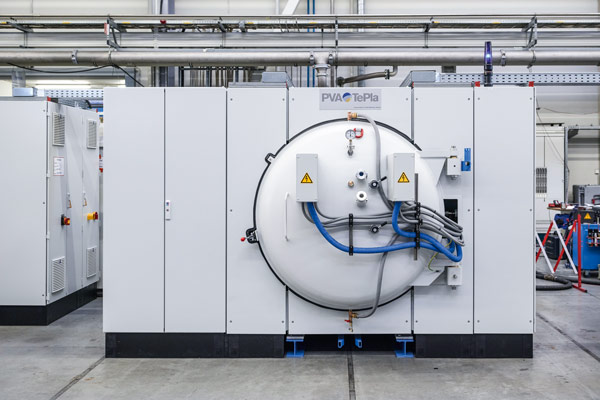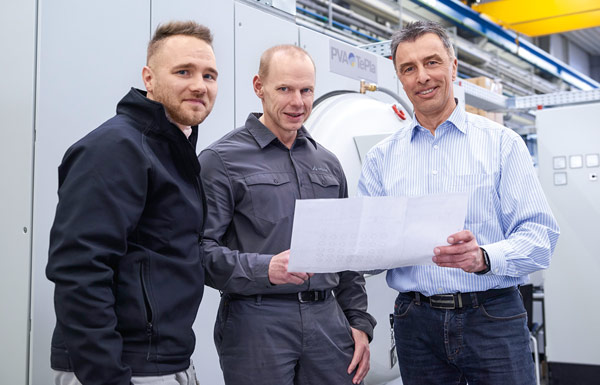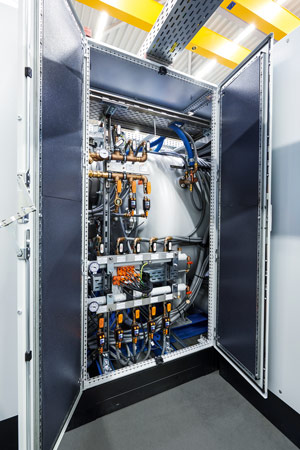Text Hans-Robert Koch ––– Photography
In most cases, enclosures are not front and centre. They are typically hidden away behind machinery and equipment or located on steel platforms in the far corners of factory buildings. The giants amongst them are normally not destined to take centre stage, but rather to help out behind the scenes. Enclosures form a stable backbone for control and switching processes on machinery and equipment. Protecting people and technology alike, they create the ideal climate for electrical engineering and electronics components, which means they also ensure stable production processes.
Enclosures thus serve a functional rather than a representative purpose. In the mechanical engineering sector, however, enclosures have a far more prominent role to play. Here, they are also found alongside machinery or as integrated components inside it and have a whole new set of tasks. With the help of operating displays on doors and side panels or thanks to connected support arm and operating systems, they become the machine operator’s “assistant”.
BETTER LOOKS, LOWER COSTS
Specialist machinery manufacturer PVA TePla has taken the use of enclosures to the next level. They take centre stage amongst the machinery in its large, lightfilled production building in Wettenberg, about an hour’s drive north of Frankfurt. For example, the vacuum specialist has been utilising Rittal enclosure technology for many years now – amongst other things, to fully encapsulate its MOV 743 heat-treatment furnaces – and it started using the new VX25 system portfolio in 2019.
“The Rittal enclosure system enables us to build highly industrialised manufacturing equipment with an attractive design that no longer looks like part of a largescale industrial production operation. You could almost have it in your living room,” says Martin Kaiser, Managing Director of panel building and switchgear business PVA Control GmbH.
The idea came about indirectly, from outside the company. A long-standing customer wanted to display PVA machinery in a sales showroom and had therefore asked a sheet metal worker to build an aesthetically appealing “packaging solution”. When Kaiser found out about this by chance, he seized the opportunity to develop a new housing concept. The basic idea was to give all the equipment, including its housing, the same look as individual enclosures – which already form an integral part of the installation. “We firmly believed back then – and we still do – that housing a machine in enclosures lined up side by side creates a uniform external appearance that looks great and fits in well with other switchgear,” explains Kaiser. “We then simply gave it a try and were pleasantly surprised in two ways. For one thing, it worked very well from a technical perspective and, for another, the enclosure concept cost about half as much as purchasing a custom-built housing from an external specialist,” he adds.
MUCH FASTER
This is because of the far shorter assembly times involved. Most of the conventional housing solutions used by PVA Control are time-consuming custom designs from external companies. Posts are often erected to start with, to which different types of panelling are attached as required. This is then followed by a powder coating process. Harnessing the benefits of a modular enclosure system for its housings makes the company faster and more flexible. “The housing is normally ready it just two days,” reveals Kaiser.
Once the machine’s mechanical structure is in place, the next step is to decide on the overall appearance of the installation and the size of the housing required. PVA Control uses standard components for this purpose, working with Rittal pitch patterns for enclosures 1,000 mm and 800 mm wide. The MOV 743 housing comprises a total of twelve individual enclosures. The aim is to arrange these so as to create a continuous housing with doors and side panels in exactly the right places – doors where equipment needs to be accessed for servicing, for instance.
In addition to quick and easy ordering of enclosures and accessories from the Rittal catalogue or online shop and the associated savings thanks to more cost-effective series articles, PVA Control also benefits from the diverse installation functions of Rittal enclosures. “The enclosure frame sections and accessories for the VX25 mean we can install components virtually anywhere, making it easy for us to fit items such as pipe brackets and cable clamps,” says Kaiser. What really speeds things up, he goes on to explain, is the straightforward machining of sheet metal components such as doors and side panels – when holes or cut-outs are required for fan-and-filter units, for example. “We simply place the panels in the Perforex BC machining centre from Rittal and drill the holes in an automated process,” continues Kaiser.
A further advantage is that enclosure- based housing technology can be integrated perfectly at the development stage. In this way, the housing grows along with the mechanical engineering. Once the equipment to be housed has been mechanically pre-assembled, there will be a series of instances when an enclosure is required at a specific location so that assembly work for cable routing or cable clamp installations can be completed – when cable ducts need to be routed on the roof of the housing/enclosures, for instance. “It’s disastrous if that takes a long time, because it means a team can’t continue working,” explains Kaiser.
EASIER INSTALLATION
Straightforward fitting and removal of enclosure doors and panels also helps reduce the total assembly time. Once the basic mechanical equipment is in place – along with the enclosure frame providing the housing function – the doors and side panels can be fitted in no time at all during the customer acceptance inspection to finish things off. The VX25 enclosure system can be assembled by one person working alone, with no need for any tools. The door is simply hung on the hinge. “In our case, the doors and side panels are normally hung in the space of an hour,” says Kaiser.
Without the modular system, assembling and dismantling all the equipment would be far more difficult for PVA TePla. “The individual parts are interchangeable. It makes no difference whether the door is ultimately hung in its original location or on the opposite side at the customer premises,” continues Kaiser. Standardisation gives the company a great deal of freedom. If a repair is required, the global availability of system components is a further plus point.
When asked which features of the VX25 are the most impressive, Kaiser sums it up as follows: “The 130-degree hinges, the more robust gland plates, the greater versatility of the new base/plinth system and the fact that the enclosure as a whole requires fewer accessories and less storage – which also brings costs benefits.”



